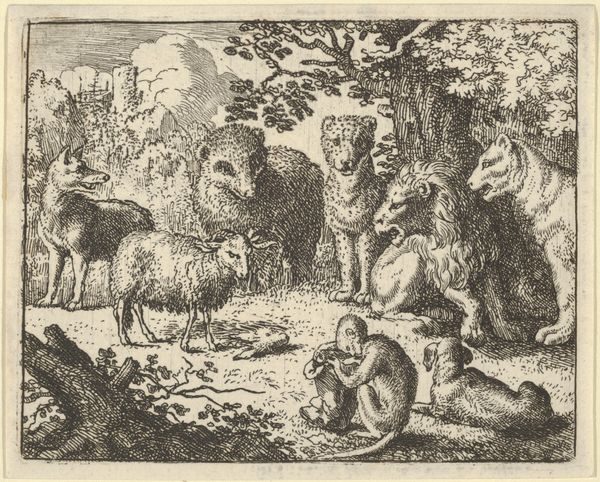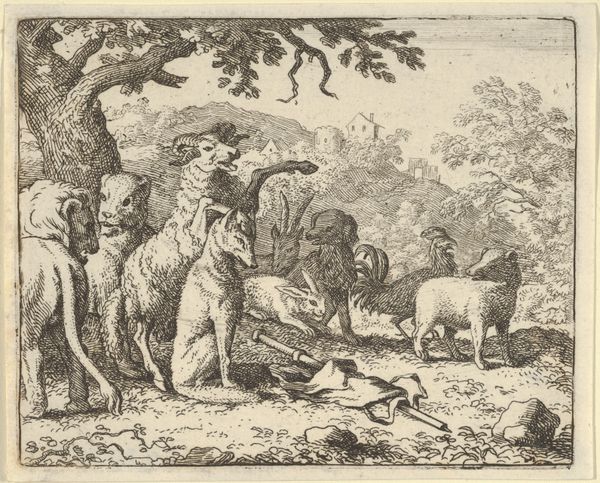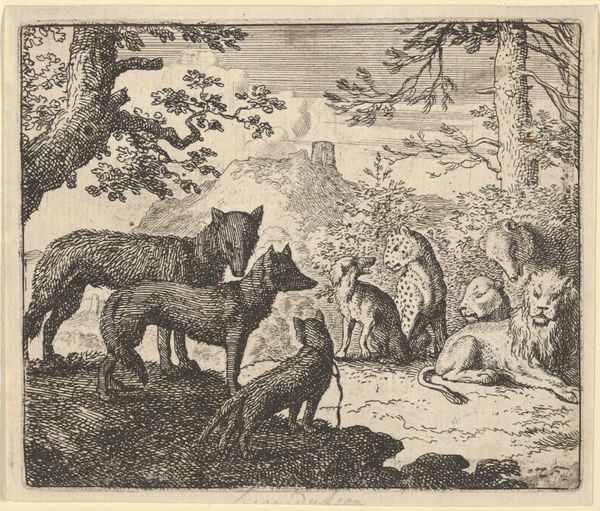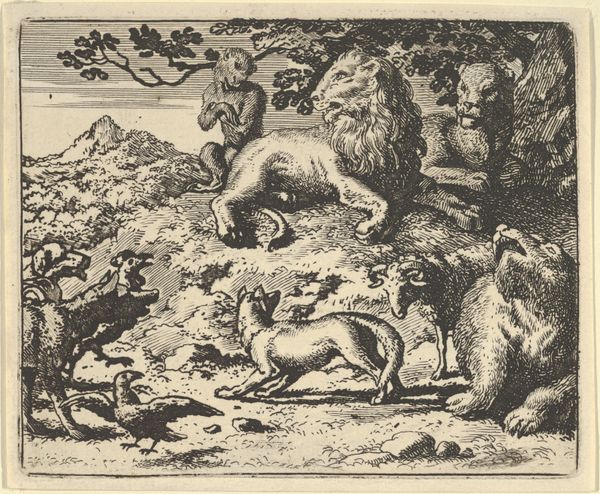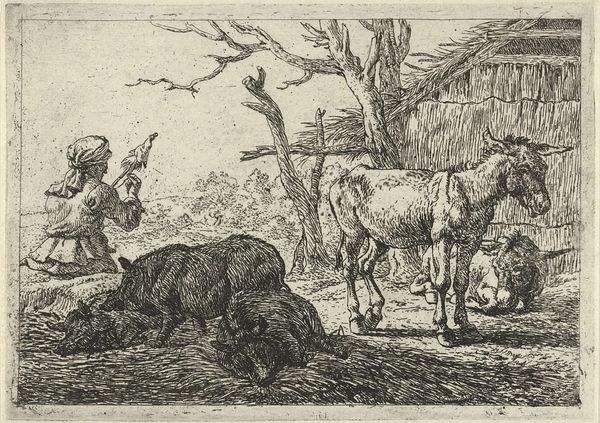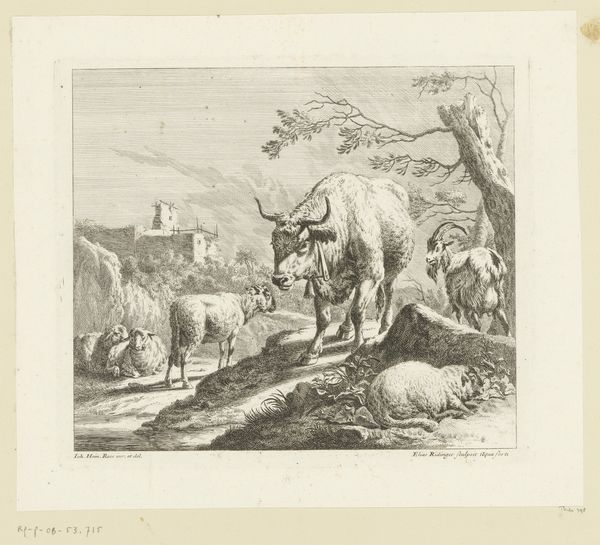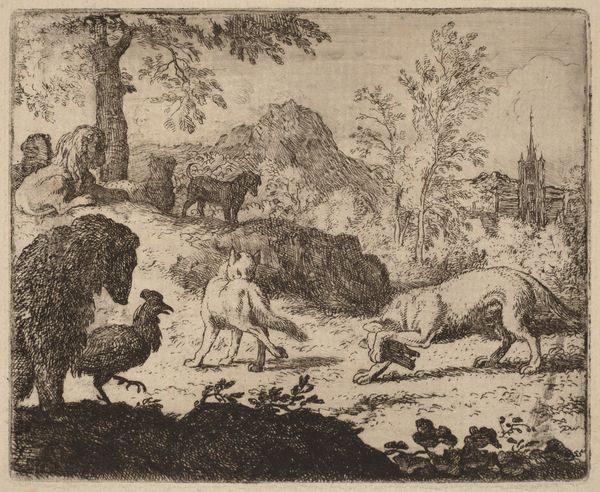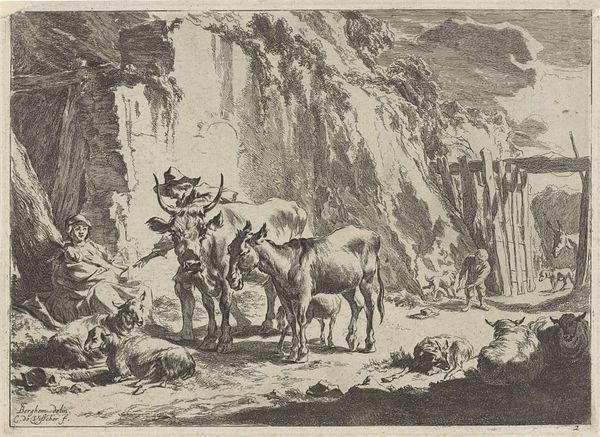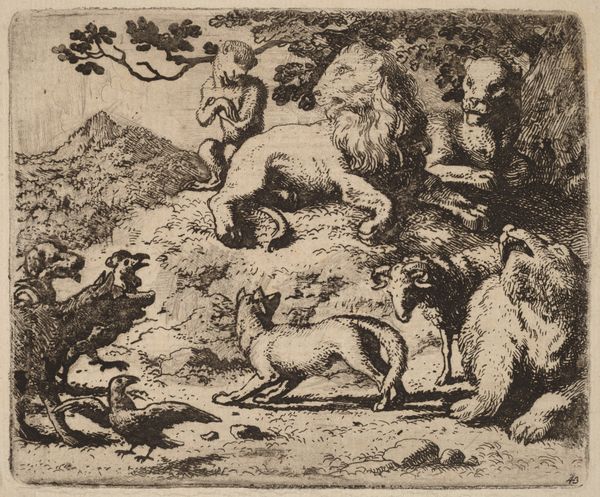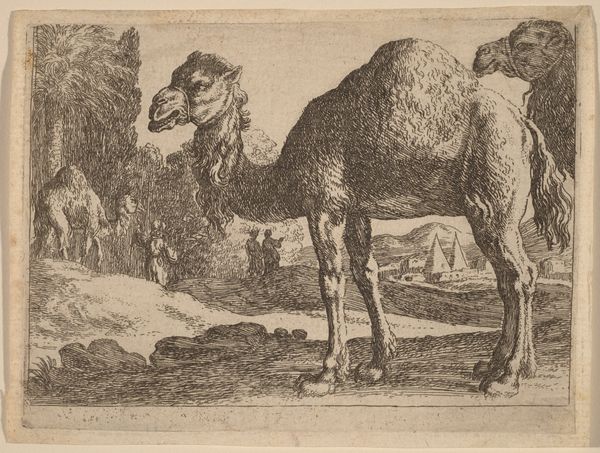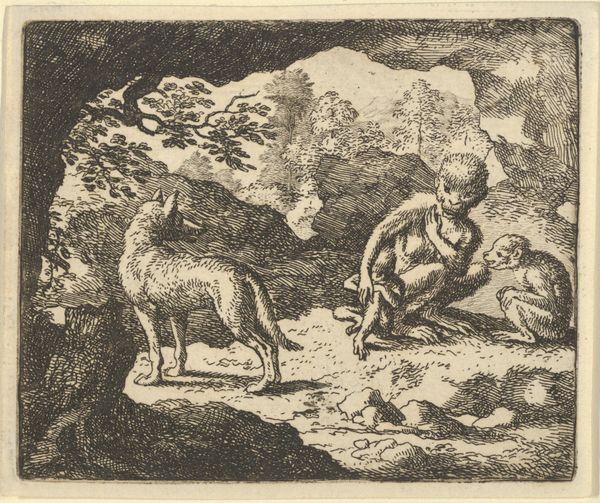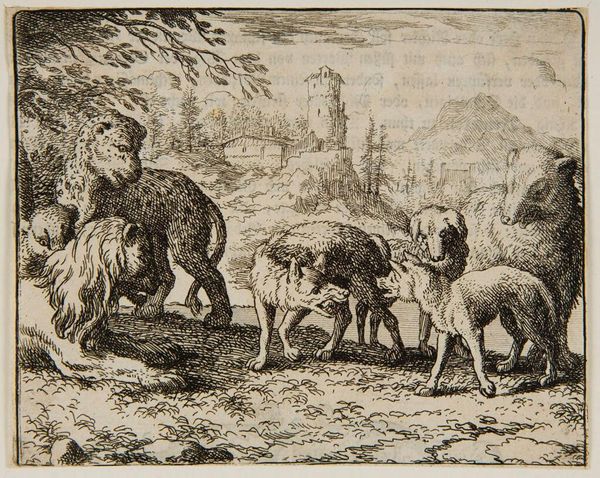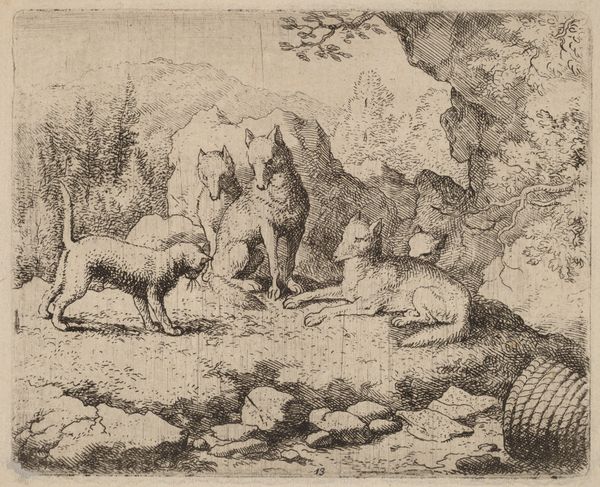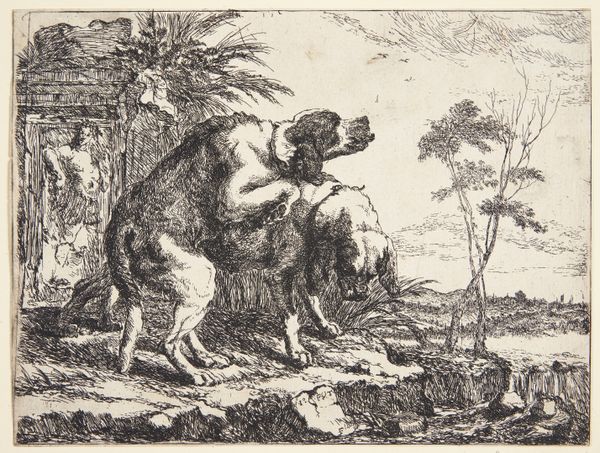
Renard is Sentenced to Death from Hendrick van Alcmar's Renard The Fox 1650 - 1675
0:00
0:00
drawing, print, engraving
#
drawing
#
narrative-art
#
baroque
# print
#
landscape
#
figuration
#
engraving
Dimensions: Plate: 3 11/16 × 4 9/16 in. (9.4 × 11.6 cm) Sheet: 3 15/16 × 4 13/16 in. (10 × 12.3 cm)
Copyright: Public Domain
Editor: Here we have Allart van Everdingen's engraving, "Renard is Sentenced to Death from Hendrick van Alcmar's Renard The Fox", dating back to between 1650 and 1675. It depicts animals in a landscape, but it’s more like a darkly comical drama. What strikes me most is the artist’s line work. What do you make of this print? Curator: As a materialist, my attention is immediately drawn to the production of this print. Consider the engraving process itself – the labor-intensive carving into a metal plate, the multiple impressions allowing for wider dissemination of the image. This was a means of mass-producing narratives, reflecting and shaping social attitudes. Do you think this reflects on a specific market, an early form of political cartoon or social commentary available to a wider, perhaps even literate, audience? Editor: That's a fascinating point. The print medium makes it widely accessible. The animal characters point to commentary on social behaviours... Were these kinds of accessible, replicable prints frowned upon by 'high' art circles? Curator: Precisely. Engravings, due to their reproducibility and function as narrative vehicles, often blurred the lines between “high art” and popular culture. This challenged established hierarchies around art production. Van Everdingen would be directly engaging a commercial market as much as cultivating art patrons. Consider the economic implications of making art readily available. Editor: It really democratizes storytelling, doesn't it? And challenges who gets to participate. Seeing the technique as part of the content… the choice of engraving isn’t just about depiction, but participation in accessible cultural exchange. Curator: Exactly. By looking at the material and means of production, we move beyond simply appreciating the image to understanding its role within a broader system of labor, distribution, and social influence. Editor: I never thought about prints that way! Thanks to you, now I am seeing the interplay of artistic creation, commerce, and social commentary in the work. Curator: My pleasure. It's about considering art as both a product and a process interwoven within its historical context.
Comments
No comments
Be the first to comment and join the conversation on the ultimate creative platform.
